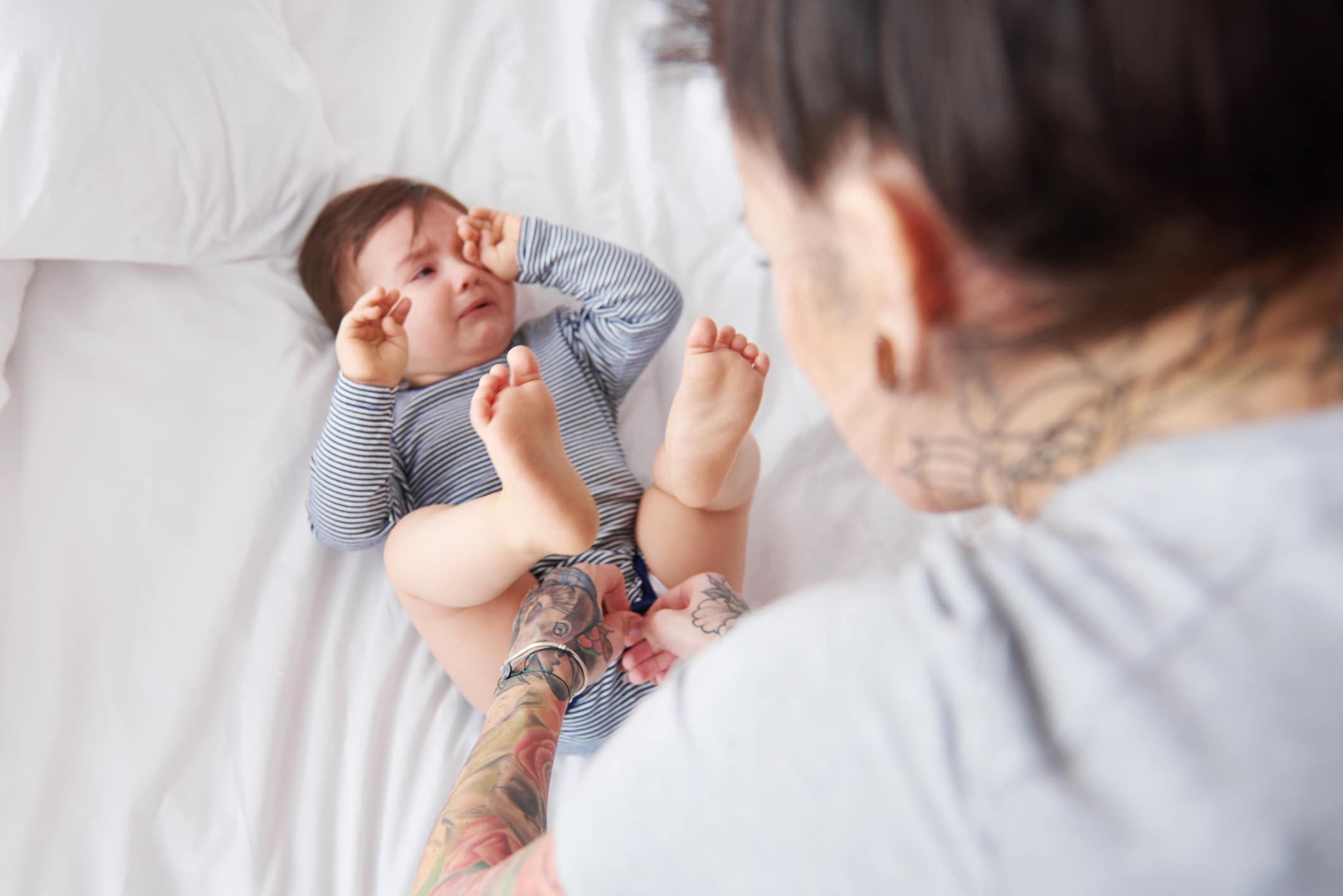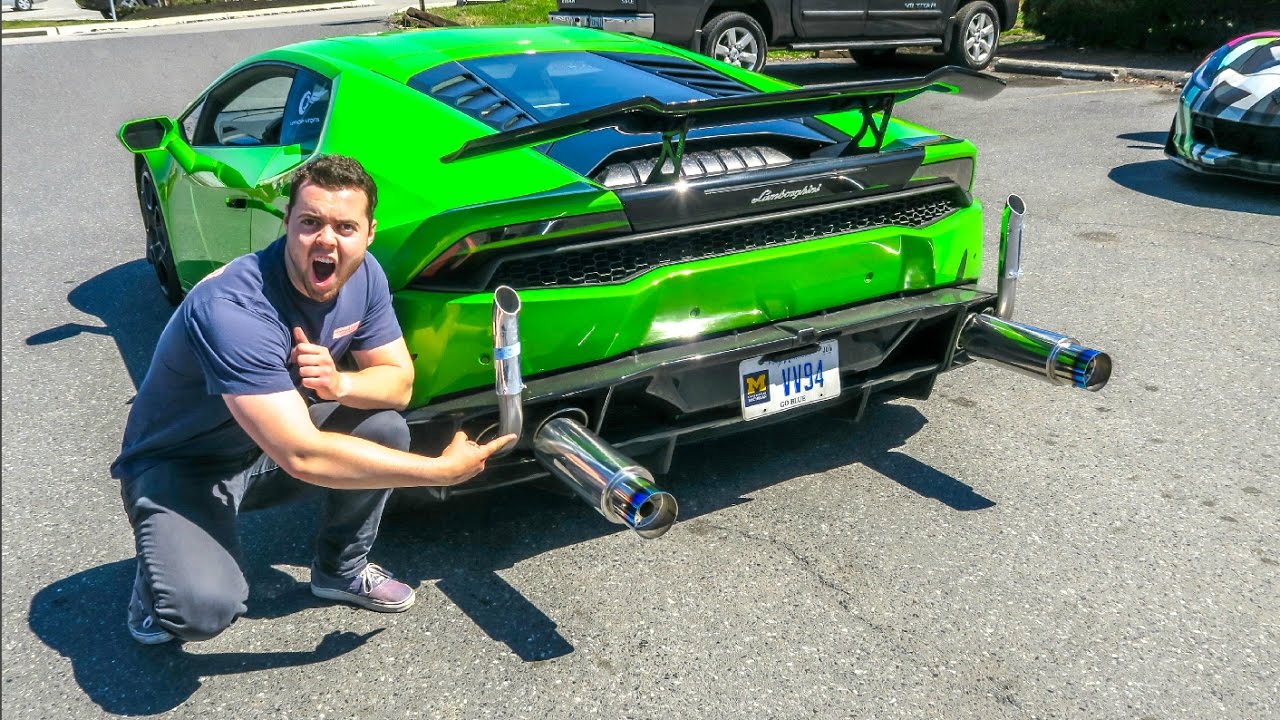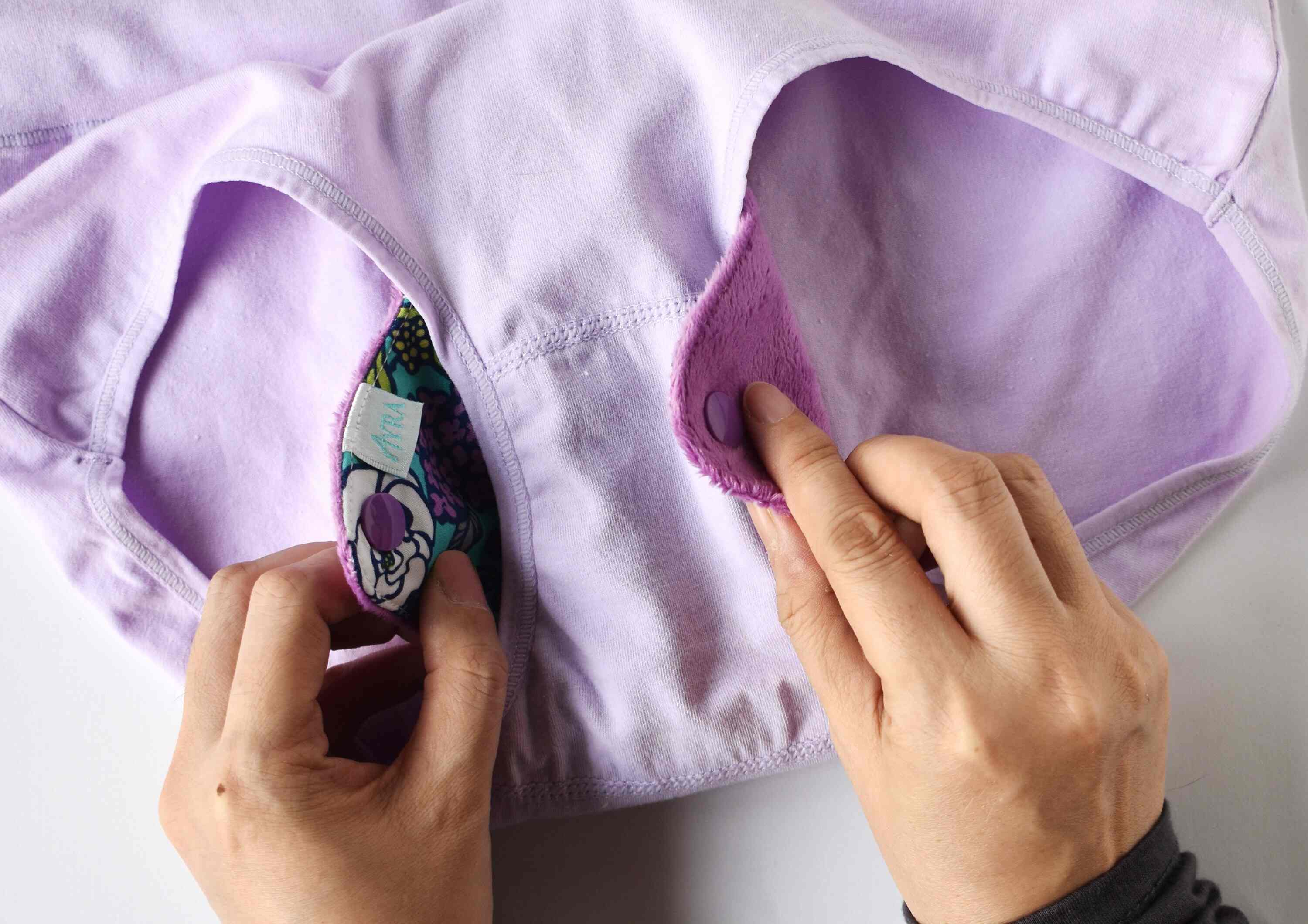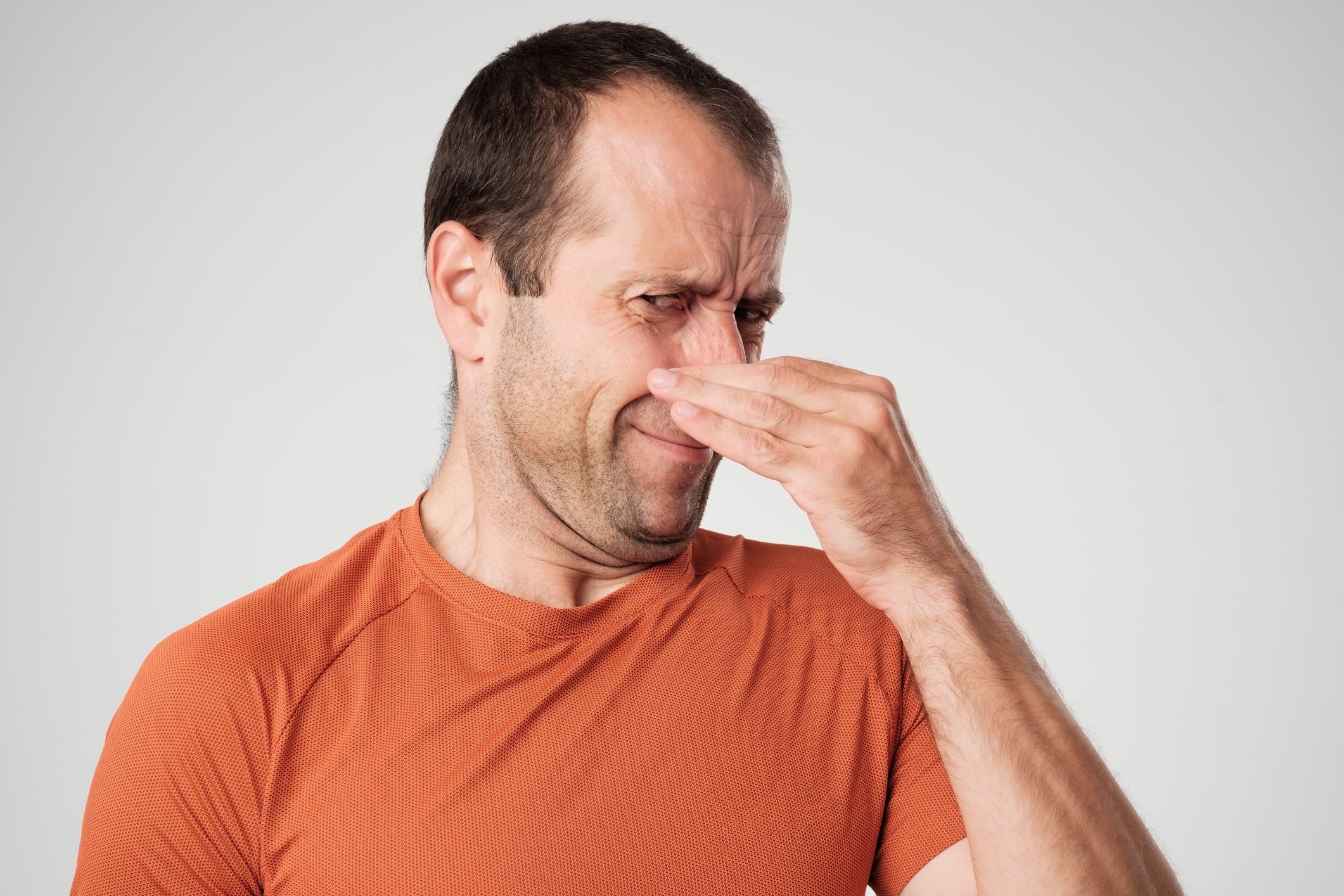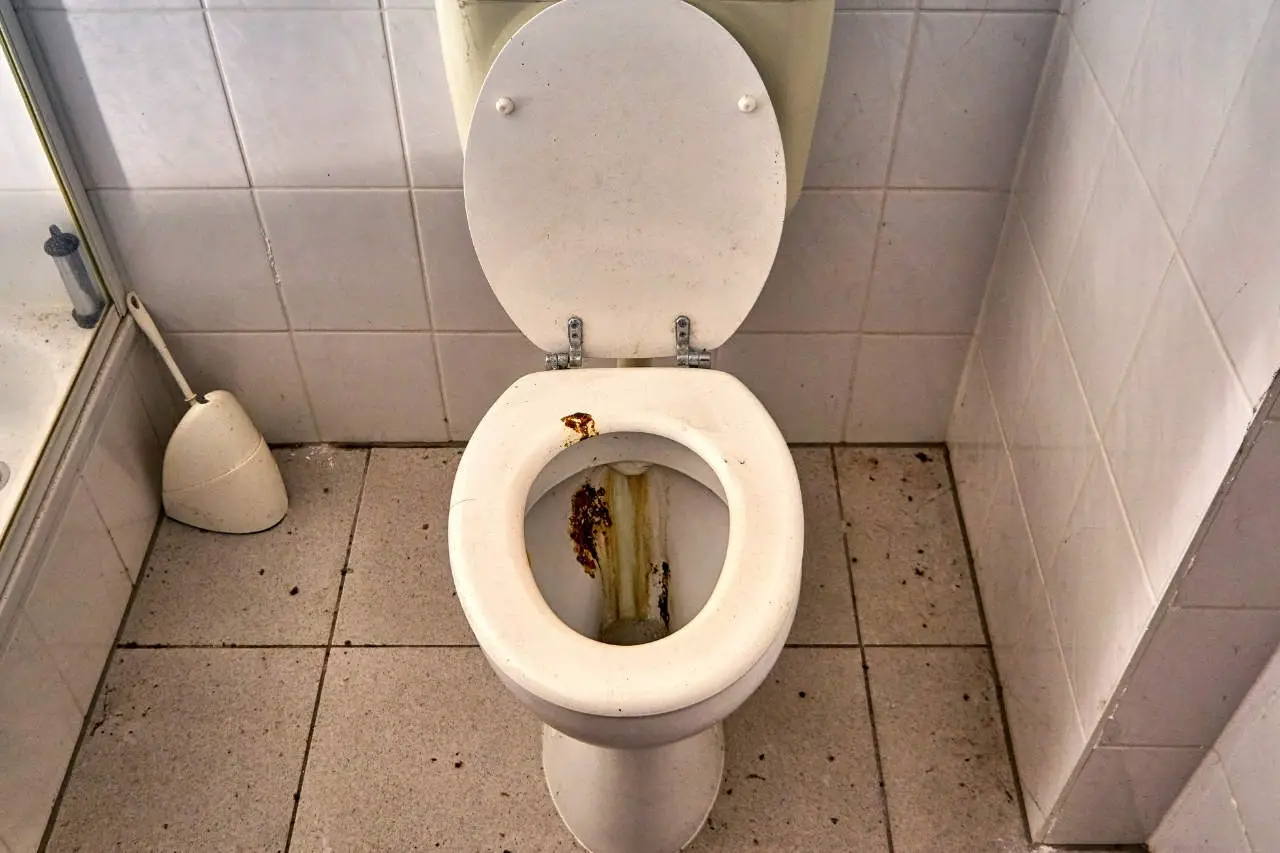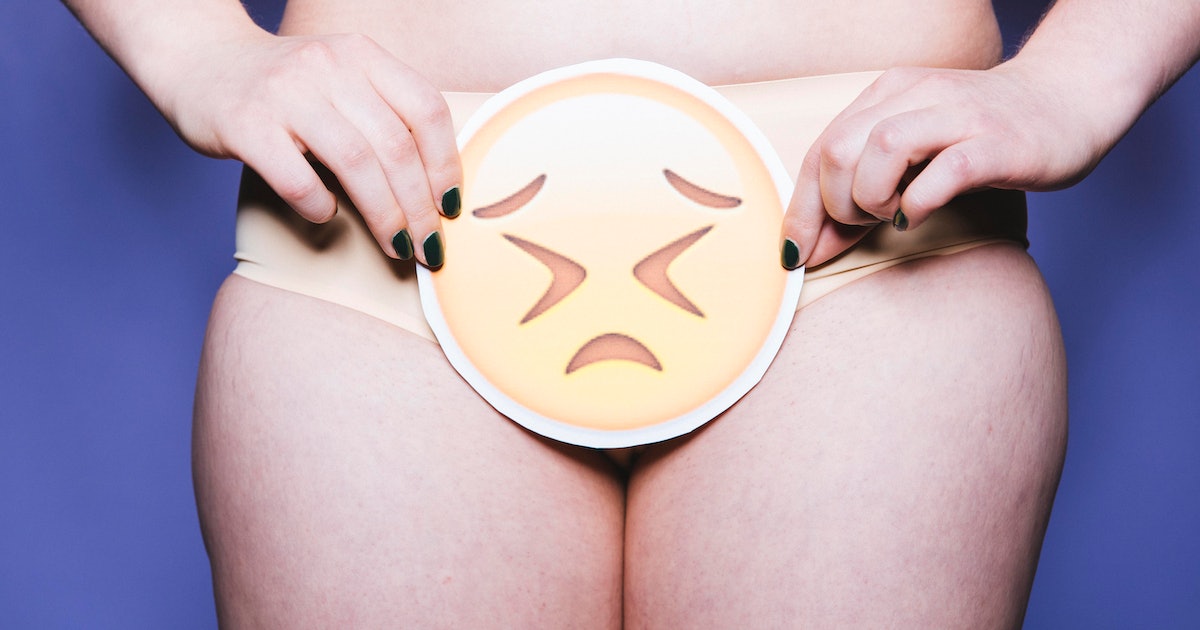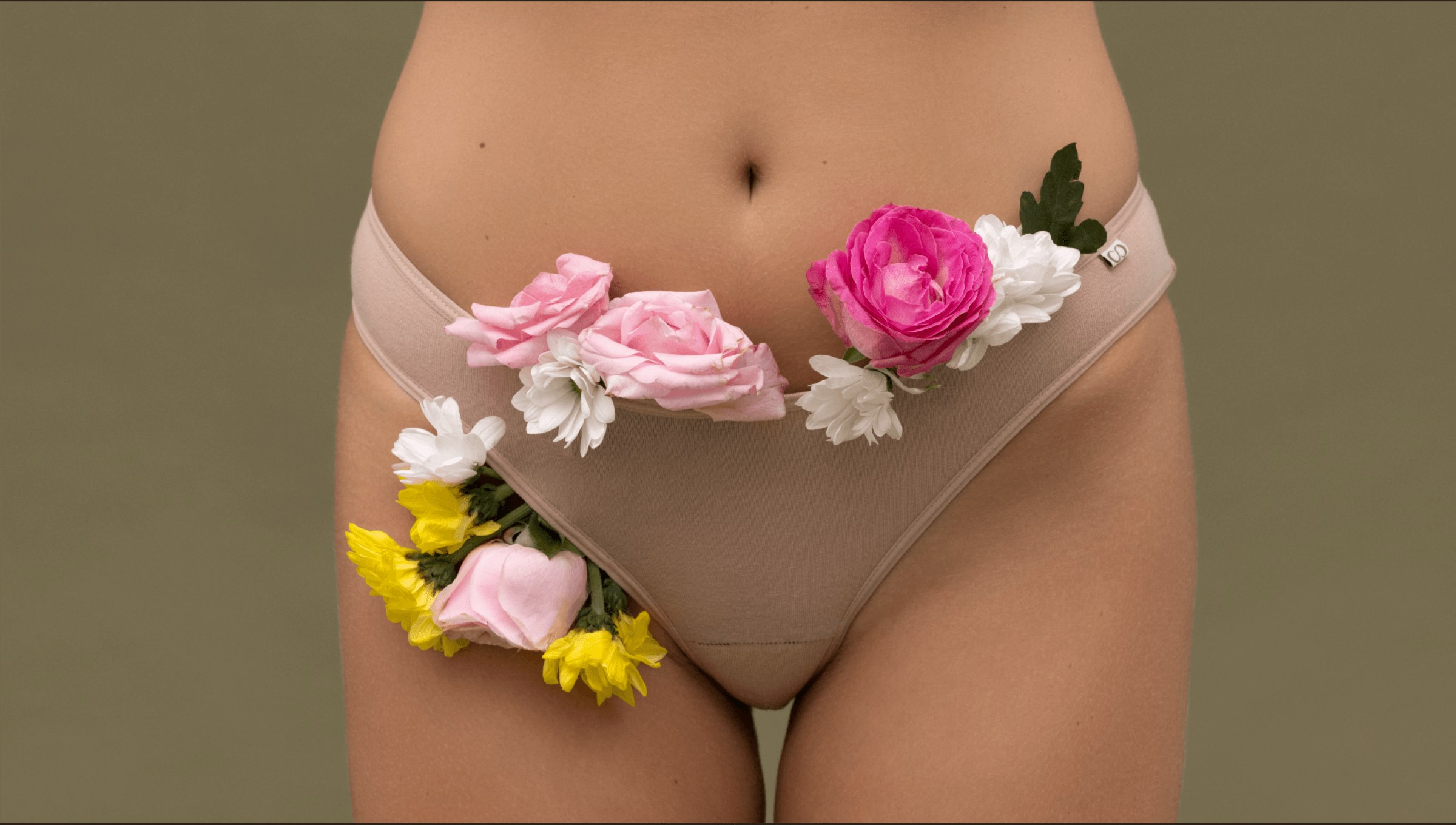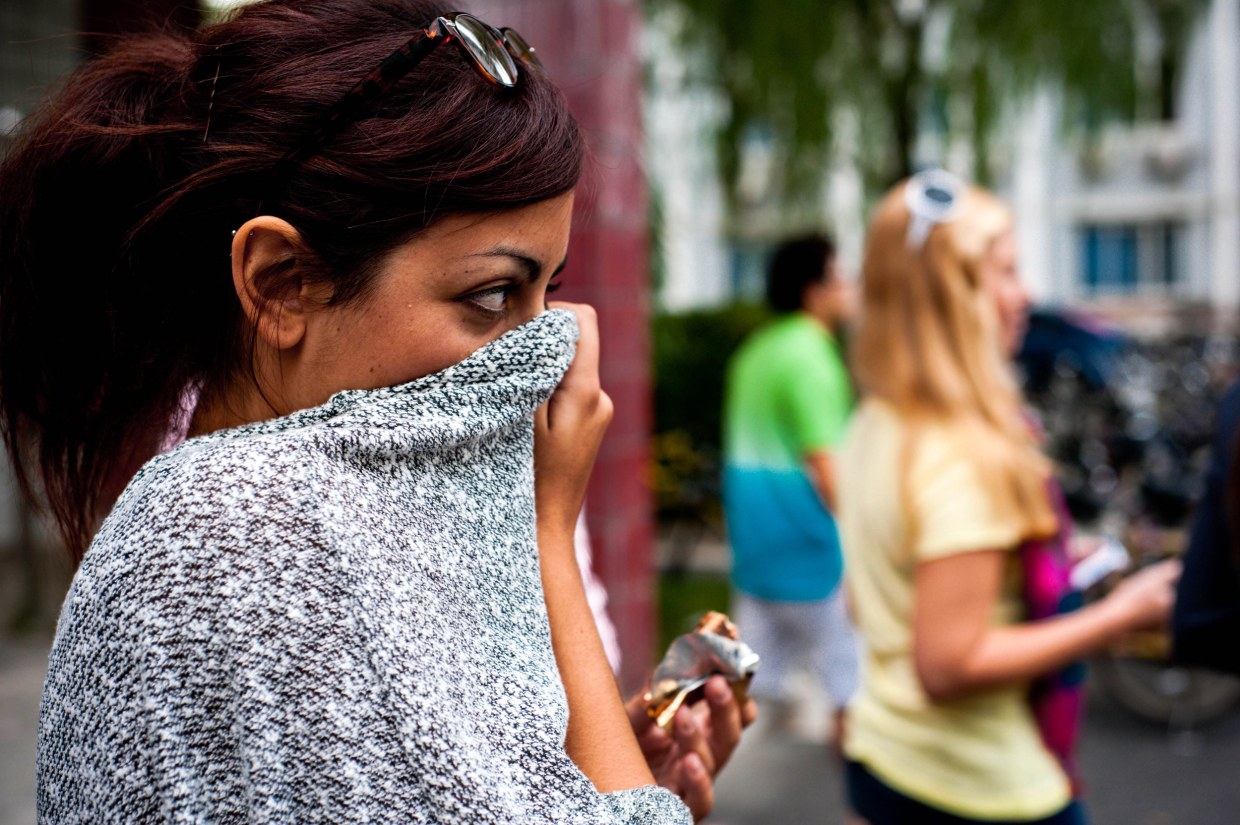Home>Women's Underwear>Bras>Why Does My Bra Gap At The Top


Bras
Why Does My Bra Gap At The Top
Modified: August 5, 2023
Discover why your bras are causing a gap at the top and how to fix it. Learn the best solutions for a comfortable and well-fitting bra.
(Many of the links in this article redirect to a specific reviewed product. Your purchase of these products through affiliate links helps to generate commission for Under-tec.com, at no extra cost. Learn more)
Table of Contents
- Introduction
- Understanding the Bra Fit
- Common Causes of Bra Gap at the Top
- Incorrect Cup Size
- Wrong Bra Style
- Breast Shape and Density
- Weight Fluctuations
- Bra Aging and Elasticity
- Body Posture and Shoulders
- Solutions to Fix Bra Gap at the Top
- Get Professionally Measured
- Try Different Bra Styles
- Consider Padded or Push-up Bras
- Adjust Your Straps and Band
- Use Bra Inserts or Cookies
- Proper Posture and Shoulder Alignment Tips
- Conclusion
Introduction
Bras are an essential part of a woman’s wardrobe, providing support, comfort, and shaping. However, one common issue that many women face is a bra gap at the top. This can be frustrating and cause self-consciousness, as it can create an unflattering and ill-fitting look. But why does this happen? And more importantly, how can you fix it?
To understand the problem of a bra gap at the top, it’s important to have a basic understanding of how bras are supposed to fit. A well-fitting bra should cup and support the breasts, with the underwire sitting flat against the ribcage and the cups encasing the entire breast tissue. The band should be snug, yet comfortable, and the straps should be adjusted to provide the right amount of lift and support.
However, despite choosing the right size and caring for your bras properly, you may still encounter a bra gap at the top. This gap refers to the space between the top of the cup and your breast. It can occur for various reasons, including an incorrect cup size, the wrong bra style, differences in breast shape and density, weight fluctuations, bra aging, and even body posture and shoulder alignment.
In this article, we’ll dive into the common causes of a bra gap at the top and provide practical solutions to help you overcome this issue. By following these tips, you’ll be able to find bras that fit correctly, enhance your silhouette, and boost your confidence.
Understanding the Bra Fit
Before delving deeper into the reasons behind a bra gap at the top, it’s crucial to understand the fundamentals of a proper bra fit. Achieving the right fit is essential for both comfort and support, as well as preventing issues such as the dreaded bra gap.
One of the key factors in determining the correct bra size is measuring your underbust and bust circumference. The underbust measurement provides the band size, while the difference between the bust and underbust measurements determines the cup size. It’s important to note that bra sizes can vary slightly between different brands and styles, so it’s essential to try on bras to ensure the best fit.
In addition to getting the correct size, it’s crucial to focus on the overall fit of the bra. The band should be parallel to the ground, snug but not too tight, and should not ride up. The center gore, the part that sits between the cups, should lie flat against your sternum. The underwire, if applicable, should follow the natural curve of your breasts without digging into your skin.
When it comes to the cups, they should fully encapsulate your breast tissue, without any spillage or gaps. This brings us to the issue of a bra gap at the top. This gap can occur for several reasons, which we will explore in the following sections.
Remember, a well-fitting bra not only provides support and comfort but also enhances your natural shape. It’s worth taking the time to try on different styles, brands, and sizes to find the perfect fit for you.
Common Causes of Bra Gap at the Top
While a bra gap at the top can be frustrating, it’s important to know that it’s a common issue faced by many women. Understanding the root causes can help you identify the best solutions to fix the problem. Here are some common causes of a bra gap at the top:
1. Incorrect Cup Size: One of the most frequent causes of a bra gap is wearing the wrong cup size. If the cups are too small, they won’t be able to fully encapsulate your breast tissue, resulting in a gap at the top. It’s crucial to measure yourself accurately and get professionally fitted to ensure you’re wearing the right size.
2. Wrong Bra Style: Different bra styles cater to different breast shapes and sizes. Some styles, such as balconette or plunge bras, are designed to provide more lift and support, reducing the chances of a bra gap. If you’re experiencing a gap with your current style, it may be worth trying a different style that suits your breast shape better.
3. Breast Shape and Density: Every woman has a unique breast shape and density, and this can contribute to a bra gap. For example, if you have fuller breasts that are not as firm, you may experience a gap at the top. Being aware of your breast shape can help you find bras that are better suited to your needs.
4. Weight Fluctuations: Changes in weight can affect how a bra fits. If you’ve recently lost or gained weight, it’s possible that your bras no longer fit properly, leading to a gap at the top. Regularly checking your bra size and getting refitted is essential, especially during weight fluctuations.
5. Bra Aging and Elasticity: Bras go through wear and tear over time, and the elastic can lose its elasticity. This can cause the cups to stretch out and no longer hug your breasts properly, resulting in a gap. It’s important to replace your bras regularly to maintain a good fit.
6. Body Posture and Shoulders: Your body posture and shoulder alignment can impact how a bra fits. If you have rounded shoulders or poor posture, it can cause the straps to slide down and create a gap at the top. Paying attention to your posture and making adjustments can help alleviate this issue.
By identifying the specific cause of your bra gap, you can take targeted steps to address the problem and find the perfect-fitting bra for your needs. In the following section, we’ll explore various solutions to help you fix a bra gap at the top.
Incorrect Cup Size
One of the most common causes of a bra gap at the top is wearing the incorrect cup size. If the cups are too small, they won’t be able to encapsulate your entire breast tissue, resulting in a noticeable gap at the top. It’s crucial to ensure you are wearing the right cup size to achieve a well-fitted bra.
The first step in determining your correct cup size is to measure yourself accurately. You can use a measuring tape or seek professional help at a lingerie store. Measure your underbust and bust circumference to determine your band size and cup size. Remember that cup sizes are not universal, and they can vary between different brands and styles. It’s always a good idea to try on different sizes to find the best fit.
If you’re experiencing a bra gap at the top, it may be due to wearing a cup size that is too small. In this case, try going up one or even two cup sizes to ensure that your breasts are fully encapsulated by the cups. Check for spillage or bulging at the sides or top of the cups, as this could indicate that the cups are still too small.
It’s also important to consider the shape of your breasts when choosing the right cup size. Some women have breasts with a fuller top or bottom, which may require a specific cup style. For example, if you have more fullness at the top, a bra with a balconette or demi-cup style may be a better fit for you, as it provides more coverage and support at the top of the breasts.
Remember to re-evaluate your bra size regularly, especially if you have experienced weight changes, as this can affect your breast size. Getting professionally measured every six months to a year is recommended to ensure you are wearing the correct cup size and maintaining a well-fitted bra.
By wearing the correct cup size, you can minimize the chances of a bra gap at the top and ensure that your breasts are adequately supported and comfortable. In the next section, we’ll explore another potential cause of a bra gap – choosing the wrong bra style.
Wrong Bra Style
Choosing the wrong bra style can also contribute to a bra gap at the top. Different bra styles are designed to cater to various breast shapes and provide varying levels of support and coverage. If you’re experiencing a gap with your current bra, it may be worth considering trying a different style that is better suited to your needs.
One common reason for a bra gap is wearing a bra style that doesn’t provide enough coverage or lift for your breasts. For example, if you have a fuller bust, a bra with a plunge or demi-cup style may not offer enough support at the top, resulting in a gap. In this case, trying a bra with a fuller cup style, such as a balconette or full-cup bra, might be more suitable.
On the other hand, if you have a smaller bust or want to enhance your cleavage, a push-up or padded bra may be a better choice. These styles lift and push the breasts together, filling out the upper part of the cups and minimizing the chances of a gap at the top. Some push-up bras also come with removable inserts or cookies, allowing you to customize the amount of padding and lift according to your preference.
Additionally, the shape and positioning of the underwire in a bra can affect the likelihood of a gap at the top. If the underwire is too narrow or doesn’t follow the natural curve of your breasts, it may create empty space at the top of the cups. Trying bras with different underwire shapes and widths can help find a style that better fits your breast shape and minimizes any potential gaps.
When shopping for bras, don’t be afraid to experiment with different styles to find what works best for you. Pay attention to how the cups fit your breasts, especially at the top, and whether the bra offers the support and coverage you need. Remember that everyone’s body is unique, so a style that works for someone else may not necessarily work for you.
By choosing the right bra style that suits your breast shape and provides the desired level of coverage and support, you can minimize the chances of a bra gap at the top. In the next section, we’ll explore how breast shape and density can contribute to this issue.
Breast Shape and Density
When it comes to a bra gap at the top, it’s important to consider the unique shape and density of your breasts. Every woman’s breasts are different in terms of fullness, firmness, and distribution of tissue, which can impact how a bra fits and whether a gap occurs.
One common scenario is having fuller breasts that are less firm. In this case, the weight of the breasts can sometimes cause them to settle towards the bottom of the bra cups, leaving a gap at the top. If you have this breast shape, look for bras with a full-coverage or full-cup style. These bras offer more material and support at the top of the cups, preventing the breasts from sinking down and creating a gap.
Conversely, if you have breasts with more fullness at the top, you may experience a gap even with well-fitting bras. This is because the upper part of the cups may not have enough volume or coverage to accommodate your breast shape. In this case, opting for bras with a balconette or demi-cup style can provide better coverage and support to minimize the gap. These styles have cups that are cut lower, allowing more room for the upper portion of the breasts.
It’s also worth considering the density of your breast tissue. Some women have denser breast tissue, which can make it more challenging to achieve a perfect fit without any gaps. Bras with thicker padding or molded cups can help provide a more seamless and contoured look, minimizing the appearance of any gaps. However, keep in mind that personal preference and comfort should be a priority when choosing a bra style.
As with any body shape or characteristic, it’s important to embrace and celebrate the uniqueness of your breasts. Remember that not all bras may fit perfectly due to variations in breast shape and density. Don’t get discouraged if you encounter a slight gap; focus on finding bras that provide the best support, comfort, and confidence overall.
Understanding and appreciating the specific characteristics of your breasts can help you select bras that are better suited to your individual needs, minimizing the chances of a gap at the top. In the next section, we’ll discuss how weight fluctuations can impact bra fit and contribute to a gap.
Weight Fluctuations
Weight fluctuations can have a significant impact on how a bra fits, which can contribute to the occurrence of a gap at the top. Whether you’ve recently lost or gained weight, it’s important to reassess your bra size and make the necessary adjustments to ensure a proper fit.
If you’ve lost weight, you may find that your bras no longer fit as they did before. The cups may feel looser, causing a gap at the top. This is because weight loss can result in a reduction in breast size and overall breast volume. In this case, it’s vital to evaluate your current bra size and consider going down a cup size to achieve a better fit. Trying on bras of different sizes and styles can help you find the best match for your new shape.
On the other hand, weight gain can lead to an increase in breast size and volume. As a result, your bras may feel tighter or create a gap at the top due to insufficient cup coverage. If you’ve experienced weight gain, it’s crucial to measure yourself and consider going up a cup size or even a band size to accommodate your new shape. Investing in bras with stretchy and adjustable features, such as bras with stretch lace or adjustable bands, can provide additional flexibility and comfort as your weight fluctuates.
It’s worth noting that weight fluctuations can occur naturally throughout the menstrual cycle, particularly due to water retention. As such, some women may experience temporary changes in breast size and shape during certain times of the month. Wearing bras with adjustable features or opting for stretchy fabrics can be beneficial during these times, as they can accommodate the fluctuations without creating a noticeable gap.
Regularly reassessing your bra size and making adjustments based on weight fluctuations is crucial to maintaining a proper fit and avoiding a gap at the top. Remember that correctly fitting bras not only provide comfort and support but also enhance your overall silhouette.
In the following section, we’ll discuss how the aging of bras and the loss of elasticity can impact their fit and contribute to a gap at the top.
Bra Aging and Elasticity
As bras age, their elasticity can diminish, which can result in a poor fit and a potential gap at the top. Over time, the constant wear and tear, along with regular washing, can cause the fabric and elastic to lose their original shape and stretchiness, affecting how the bra cups conform to your breasts.
Bras typically have a lifespan of about 6-12 months, depending on how often they are worn and how well they are cared for. If you’ve been wearing the same bra for an extended period, it’s important to assess its condition and consider replacing it if the elastic has significantly stretched out. This is particularly important if you’ve noticed a gap at the top, as it is likely a sign that the bra has lost its shape and support.
When bras lose their elasticity, the cups may not hug your breasts as they should, resulting in gaps at the top. The straps may also become looser and slide off your shoulders, further contributing to a poor fit. Additionally, the band may not provide the necessary support, leading to discomfort and inadequacy in lifting the breasts.
To prolong the lifespan of your bras, it’s important to follow proper care instructions. Hand-washing and air-drying are recommended to prevent damage to the delicate fabrics and elastic. Avoid using harsh detergents or fabric softeners that can weaken the elasticity. Rotating your bras and giving them a rest day between wears can also help maintain their shape and elasticity.
If you notice a gap at the top of your bra and suspect that it may be due to the bra’s aging, it’s time to consider investing in new bras. Choose bras made with high-quality materials and sturdy elastic that will provide the necessary support and longevity. Regularly checking the fit of your bras and replacing them when necessary will ensure that you have well-fitting bras that minimize gaps and provide the desired support and comfort.
In the next section, we will explore the relationship between body posture, shoulder alignment, and the occurrence of a bra gap at the top.
Body Posture and Shoulders
Believe it or not, your body posture and shoulder alignment can play a significant role in the occurrence of a bra gap at the top. Poor posture and misaligned shoulders can affect how a bra fits and lead to unsightly gaps.
When your body posture is slouched or your shoulders round forward, it can cause the bra straps to slide down. This downward movement leads to the cups not properly hugging your breasts, resulting in a gap at the top. It’s important to be aware of your posture and make a conscious effort to keep your shoulders back and your spine aligned.
One way to improve your posture is to engage in exercises that strengthen your back and core muscles. Pilates, yoga, and strength training can help improve your posture and overall body alignment. Additionally, practicing good posture throughout the day, whether standing or sitting, can make a significant difference in how your bras fit.
Shoulder alignment also plays a role in the occurrence of a bra gap. If your bra straps are too tight or too loose, they can cause the cups to sit incorrectly on your breasts. Straps that are too tight can pull the cups down, creating gaps at the top. On the other hand, loose straps can cause the cups to gap due to inadequate support.
Adjusting your bra straps to the right length is essential for achieving a well-fitted bra. The straps should be adjusted to provide the right amount of lift and support without digging into your shoulders. Checking your strap length regularly and making necessary adjustments can help minimize the occurrence of a bra gap.
Furthermore, some bras come with convertible or adjustable straps that allow you to cross them at the back, providing additional support and ensuring a better fit. These types of bras can be particularly beneficial if you have sloping or narrow shoulders, as they help anchor the bra in place and prevent gaps at the top.
By paying attention to your body posture and shoulders, you can improve the fit of your bras and reduce the likelihood of a gap at the top. Remember to adjust your bra straps properly and maintain a good posture throughout the day to ensure optimal comfort and support.
In the next section, we will explore various solutions to help you fix a bra gap at the top.
Solutions to Fix Bra Gap at the Top
Experiencing a bra gap at the top can be frustrating, but the good news is that there are several solutions to help you fix this issue and achieve a better-fitting bra. Here are some practical solutions to consider:
1. Get Professionally Measured: Start by getting professionally measured to ensure you’re wearing the correct bra size. A professional fitter can help you determine your band and cup size, taking into account your unique breast shape and other factors that may contribute to the gap. Remember, bra sizes can vary between brands and styles, so the expert guidance of a fitter can be invaluable.
2. Try Different Bra Styles: Experimenting with different bra styles can make a significant difference in achieving a better fit. If one style is causing a gap, try another style that provides more coverage or support. For example, if you’re experiencing a gap with a balconette bra, try switching to a full-cup or plunge style that better suits your breast shape.
3. Consider Padded or Push-up Bras: Padded or push-up bras can be effective in minimizing the appearance of a gap at the top. These styles enhance the shape and fullness of your breasts, offering a more rounded and lifted look. Look for bras with removable inserts or cookies, allowing you to customize the level of padding and lift according to your preferences.
4. Adjust Your Straps and Band: Ensure that your bra straps are adjusted properly. They should be snug but not dig into your shoulders. Also, check that the band is firm and parallel to the ground, providing the necessary support. Adjusting the straps and band can help lift the cups, reducing any gaps and improving the overall fit.
5. Use Bra Inserts or Cookies: For those who have a smaller bust or asymmetrical breasts, bra inserts or cookies can be a useful solution. These inserts can fill out the top of the cups, improving the overall fit and minimizing any gap. They come in various shapes and thicknesses, allowing you to customize the fit to your specific needs.
6. Proper Posture and Shoulder Alignment Tips: Pay attention to your body posture and shoulder alignment throughout the day. Practice keeping your shoulders back and your spine aligned to prevent the bra straps from sliding down. Engaging in exercises that strengthen your back and core muscles can also help improve your posture and prevent gaps.
By implementing these solutions, you can address and minimize the occurrence of a bra gap at the top. Remember that every body is unique, so it’s important to find what works best for you in terms of fit, comfort, and support. Don’t hesitate to try different strategies until you find the perfect solution for your specific needs.
Get Professionally Measured
One of the most important steps in addressing a bra gap at the top is to get professionally measured. While you may have an idea of your bra size, it’s worth seeking the expertise of a trained professional to ensure accuracy and find the perfect fit for your unique body.
Professional bra fitters are skilled in measuring and identifying the right band and cup sizes for individuals. They have a trained eye and the knowledge to recognize specific factors that may contribute to a bra gap, such as breast shape, symmetry, firmness, and other nuances that affect the fit.
Getting measured by a professional can help debunk any misconceptions about your bra size. Many women are wearing the wrong bra size, not realizing that it can contribute to a bra gap and discomfort. An experienced fitter will take precise measurements of your underbust and bust circumference, helping you determine the correct band size and cup size.
It’s important to note that bra sizes can vary between different brands and even within different styles of the same brand. The guidance of a professional fitter can help you navigate these variations and ensure that you’re consistently wearing the right size across different brands and styles.
During your fitting session, don’t be afraid to communicate any concerns or issues you’ve experienced with bra gaps. Fitters can assess your specific needs and suggest bra styles that are better suited to your breast shape and size.
Keep in mind that our bodies can change over time, whether due to weight fluctuation, pregnancy, or natural aging. Regular follow-up fittings every 6-12 months are recommended to ensure that your bras continue to fit properly and accommodate any changes that may have occurred.
Remember, getting professionally measured is a valuable investment in your comfort and confidence. By starting with accurate measurements, you can lay the foundation for finding bras that fit seamlessly, reduce or eliminate gaps at the top, and provide the support and lift you desire.
Try Different Bra Styles
When faced with a bra gap at the top, trying different bra styles can be a game-changer. Not all bra styles are created equal, and finding the right style that suits your breast shape and size can significantly reduce or even eliminate the gap.
Each bra style is designed to offer different levels of coverage, support, and shaping. Experimenting with various styles allows you to understand what works best for your breasts and addresses any specific issues you may be facing.
If you’re experiencing a gap with your current bra, it may be worth considering a different style that provides more coverage or support at the top. For example, a balconette or full-cup bra style offers fuller coverage and can minimize or eliminate the gap, especially for those with fuller or lower-hanging breasts.
On the other hand, if you have breasts that are more full at the top or have a shallower shape, a bra style like a demi-cup or plunge bra may be a better fit. These styles have cups that are cut lower, allowing for more room at the top and catering to your specific breast shape.
It’s important to keep in mind that not all bra styles will work for everyone. Body shape, breast density, and personal preferences all come into play when determining the ideal bra style. Trying on different styles and observing how the cups fit your breasts, especially at the top, will help you assess which styles minimize or eliminate the gap.
Don’t be afraid to step out of your comfort zone and explore options you may not have considered before. Give styles such as balconette, push-up, plunge, or full-cup bras a try to see how they fit your breasts and address any gap issues. You might be pleasantly surprised by how a simple change in style can transform the fit and appearance of your bras.
Remember, finding the perfect bra style is a process of trial and error. What works for someone else may not work for you, so take the time to experiment with different styles and listen to your own body’s feedback. Your goal is to find bras that provide the right comfort, support, and eliminate any dreaded gaps at the top.
Consider Padded or Push-up Bras
If you’re dealing with a bra gap at the top, one effective solution is to consider wearing padded or push-up bras. These styles are designed to add volume, lift, and shape to the breasts, which can help minimize or eliminate the appearance of a gap.
Padded bras feature padding in the cups, whether it’s a thin layer or thicker foam. This added padding helps fill out the cups and provides a fuller look to the breasts. If you have asymmetrical breasts or simply want a more balanced appearance, padded bras can be an excellent option as they offer a symmetrical and consistent shape.
Push-up bras, on the other hand, go a step further by incorporating padding and additional design elements that push the breasts closer together and upward, enhancing the cleavage. These bras are ideal if you’re looking for more lift and a more pronounced shape. By lifting the breasts, push-up bras minimize the likelihood of a gap at the top and create a more rounded and fuller appearance.
When choosing a padded or push-up bra, consider the level of padding that you’re comfortable with. Some bras have removable inserts or cookies, which allow you to adjust the amount of padding according to your preference. This flexibility allows you to customize the level of enhancement and control the appearance of any gaps at the top.
It’s important to note that padded and push-up bras come in various styles, including balconette, plunge, and t-shirt styles. Take the time to try on different styles to see which ones provide the best fit, comfort, and the desired level of padding and lift for your individual needs.
While padded and push-up bras are effective in minimizing gaps at the top, it’s crucial to find styles that suit your breast shape and size. Remember to prioritize comfort and ensure that the bras provide the necessary support in addition to addressing the gap issue.
Whether you opt for a padded bra, a push-up bra, or a combination of both, these styles can help enhance your silhouette, boost your confidence, and provide a more flattering fit without any unsightly gaps at the top.
Adjust Your Straps and Band
When dealing with a bra gap at the top, one simple and effective solution is to adjust your bra straps and band. Properly adjusting these elements can make a significant difference in achieving a better fit and reducing the occurrence of a gap.
First, let’s focus on the bra straps. Straps that are too loose or too tight can cause the cups to sit incorrectly on your breasts, resulting in gaps at the top. To ensure the right fit, adjust the straps so that they’re snug but not digging into your shoulders. The straps should provide support without causing discomfort or slipping off your shoulders. Regularly checking and adjusting the strap length can help maintain a secure and well-fitted bra.
Next, pay attention to the bra band. The band is responsible for the majority of the bra’s support. It should fit snugly around your ribcage, parallel to the ground, and not ride up. If the band is too loose, it won’t provide sufficient support, and the cups may shift, leading to a gap at the top. Conversely, if the band is too tight, it can cause the cups to be pulled down, creating the same issue.
To adjust the band, fasten it on the loosest hook and eye closure, allowing room for adjustments as the bra stretches over time. If you find that the band is too loose, move to the next tighter closure. Remember to check the fit of the band every few months and make adjustments as needed.
Additionally, pay attention to the position of the center gore, the part of the bra that sits between the cups. The center gore should lay flat against your sternum, comfortably separating the breasts. If the center gore is not sitting flat or is pressing into your breast tissue, it can affect the fit of the cups and contribute to a gap. Adjusting the band and straps can help reposition the center gore for a better fit and minimize any gaps.
Keep in mind that everyone’s body is different, so the adjustments that work for one person may not work for another. Experimenting with strap length, band tightness, and center gore positioning can help you find the best adjustment for your unique shape and minimize any gaps at the top.
By taking the time to properly adjust your bra straps and band, you can improve the fit, support, and comfort of your bra, reducing the likelihood of a gap at the top.
Use Bra Inserts or Cookies
If you’re experiencing a bra gap at the top, using bra inserts or cookies can be an effective solution. These inserts provide additional volume and fill out the upper part of the cups, helping to minimize or eliminate the appearance of a gap.
Bra inserts, also known as bra pads or enhancers, are typically made of foam or silicone and are designed to be placed inside the cups of your bra. They come in various shapes, sizes, and thicknesses, allowing you to customize the amount of padding and lift you desire.
If you have asymmetrical breasts, using bra inserts can help balance out the size and shape, creating a more symmetrical appearance and minimizing the gap. By filling out the cups, the inserts enhance the overall shape and silhouette, providing a smoother and more even look.
Bra cookies are similar to inserts but are typically made of lightweight foam or fabric. These cookies can be inserted into the pockets or slits within the bra cups or placed on top of the breasts for added volume. Like bra inserts, they help fill out the top part of the cups, reducing any gaps and providing a more even and lifted appearance.
The beauty of using bra inserts or cookies is that they are removable and can be easily adjusted or switched out based on your preference. If you prefer a more natural shape and minimal padding, you can opt for thinner inserts or cookies. On the other hand, if you desire more volume or lift, you can choose thicker inserts that provide a more pronounced effect.
When using bra inserts or cookies, ensure that they are positioned correctly in the cups and that they don’t create discomfort or bulkiness. Take the time to adjust and arrange them until you achieve the desired fit and look.
It’s important to note that bra inserts and cookies can be used in various bra styles, including padded, push-up, or even non-padded bras, depending on your preferences and needs. Additionally, they can be used for both small-busted and larger-busted individuals, providing customizable options for achieving the best fit and minimizing any gaps at the top.
By using bra inserts or cookies, you can enhance the appearance of your breasts, fill out the cups of your bra, and reduce the occurrence of a gap. Experiment with different sizes and styles of inserts or cookies to find the ones that work best for you and provide the desired shape and level of padding.
Proper Posture and Shoulder Alignment Tips
Believe it or not, your body posture and shoulder alignment play a significant role in the occurrence of a bra gap at the top. Maintaining proper posture and shoulder alignment can help ensure a better fit, minimize gaps, and enhance the overall appearance of your bra.
When your posture is slouched or your shoulders round forward, it causes the bra straps to slide down. As a result, the cups of the bra do not sit properly on your breasts, leading to a gap at the top. Improving your posture is crucial for preventing this issue.
One way to improve your posture is by strengthening your back and core muscles. Engaging in exercises such as Pilates, yoga, or strength training can help improve your posture by strengthening the muscles that support your spine. These exercises can help pull your shoulders back and align your spine, reducing the chances of a bra gap.
Throughout the day, practice maintaining good posture whether you are sitting, standing, or walking. Imagine a string pulling your head upwards towards the ceiling, creating length in your spine. Roll your shoulders back and down, avoiding rounding or slouching forward. By making a conscious effort to maintain proper posture, you can keep the bra straps in place and prevent any gaps from occurring.
In addition to improving posture, ensuring proper shoulder alignment is necessary to address a bra gap. If your bra straps are too tight or too loose, it can cause the cups to sit incorrectly on your breasts. Tight straps pull the cups down and create a gap, while loose straps offer inadequate support, resulting in a similar problem.
Adjusting your bra straps to the right length is essential for achieving a better fit. The straps should be adjusted so they are snug but not digging into your shoulders. They should provide support without causing discomfort or slipping off. Regularly check and readjust the strap length to maintain a secure and well-fitted bra.
It can also be helpful to consider bras with convertible or adjustable straps. These types of bras allow you to cross the straps at the back, which can provide additional support and keep them in place on your shoulders. This can be especially beneficial if you have sloping or narrow shoulders, as it helps anchor the bra and prevent gaps.
By paying attention to your body posture and shoulder alignment, you can significantly improve the fit of your bras and reduce the likelihood of a gap at the top. Practicing proper posture and adjusting your bra straps accordingly will help ensure optimal comfort, support, and a seamless appearance.
Conclusion
Dealing with a bra gap at the top can be frustrating, but it’s not an uncommon issue. Understanding the reasons behind this problem and implementing the appropriate solutions can help you achieve a better-fitting bra and boost your confidence.
Throughout this article, we have explored different causes of a bra gap, including incorrect cup size, wrong bra style, breast shape and density, weight fluctuations, bra aging, and body posture. We have also provided various solutions to address these issues, such as getting professionally measured, trying different bra styles, considering padded or push-up bras, adjusting straps and bands, using bra inserts or cookies, and focusing on proper posture and shoulder alignment.
Remember, finding the perfect bra fit is a process of trial and error. It’s important to take the time to understand your own breast shape, size, and personal preferences. By experimenting with different styles and implementing the solutions that work best for you, you can minimize or even eliminate the occurrence of a bra gap.
Don’t be discouraged if you don’t find the perfect fit right away. Our bodies change over time, and bra fitting is not an exact science. Regularly assessing your bra size and making adjustments when needed –whether due to weight fluctuations, bra aging, or changes in breast shape – can help ensure a comfortable and well-fitted bra that eliminates any gaps.
Ultimately, the goal is to find bras that provide adequate support, enhance your natural shape, and make you feel confident and comfortable. By following the tips and solutions outlined in this article, you’ll be well on your way to finding the perfect-fitting bras that minimize or eliminate any gaps at the top.
So, embrace your uniqueness, prioritize your comfort, and enjoy the journey of finding bras that fit seamlessly while boosting your confidence and enhancing your silhouette.
